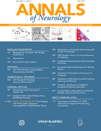Thrombolysis with recombinant tissue plasminogen activator under dabigatran anticoagulation in experimental stroke
Abstract
Objective:
Anticoagulation with dabigatran etexilate (DE) has a favorable risk-to-benefit profile for the prevention of ischemic events in patients with atrial fibrillation compared to warfarin. Whereas warfarin constitutes a strong contraindication for thrombolysis, it is unclear whether patients anticoagulated with DE can be thrombolysed. We compared the risk of thrombolysis-associated hemorrhagic transformation (HT) after pretreatment with DE or warfarin in a mouse model of ischemic stroke.
Methods:
Thirty-nine C57BL/6 mice were pretreated orally with 75mg/kg DE, 112.5mg/kg DE, 2mg/kg warfarin, or saline. We performed right middle cerebral artery occlusion for 3 hours, administered recombinant tissue plasminogen activator (rt-PA) directly before reperfusion, and assessed neurological deficit and HT blood volume after 24 hours.
Results:
Warfarin anticoagulation increased HT secondary to rt-PA treatment as compared to nonanticoagulated controls (6.9 ± 5.5μl vs 0.8 ± 0.6μl, p < 0.05). In contrast, the rate of HT after pretreatment with 75mg/kg DE, which led to plasma levels comparable to the highest plasma levels observed in participants of the RE-LY trial, did not differ significantly from controls (1.6 ± 0.8; p > 0.05 vs control). However, a high-dose group receiving 112.5mg/kg DE showed a considerable extent of HT (9.2 ± 5.6μl, p < 0.01).
Interpretation:
Our experimental data suggest that the risk of thrombolysis-associated HT may not be increased under DE pretreatment with standard doses leading to plasma levels of up to 400ng/ml, a concentration that was not exceeded in the majority of DE trial patients. At higher DE plasma levels, however, the risk of severe HT rises considerably, emphasizing the need for a readily available assay of DE anticoagulant activity. ANN NEUROL 2012




